Orange Monkeys
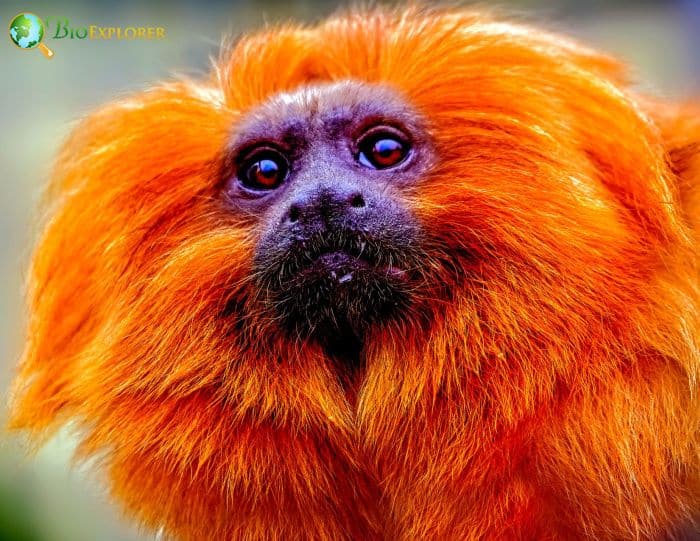
Some monkey species are born with bright orange fur; the coat color would gradually turn black as they age. However, some New-world monkeys continue to have orange fur throughout their lives.
Orange Monkeys
Explore all types of orange-colored monkeys here.
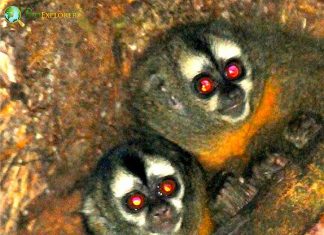
Andean Night Monkey
Andean night monkeys are a genus Aotus, commonly known as nocturnal monkeys or the Peruvian night monkey. Species in this genus are the only truly nocturnal monkeys in the world. Andean night monkeys are not sexually dimorphic as males and females look very similar.
Read more
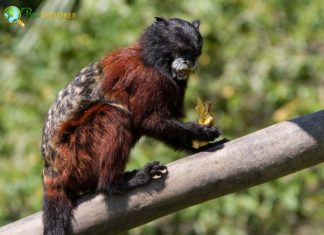
Andean Saddle-back Tamarin
The Andean saddle tamarin, also known as the saddleback tamarin (formerly known as the brown-mantled tamarin), is a New World monkey species. Andean saddleback monkeys are considered "phyletic dwarfs," meaning their small size is related to their evolutionary development.
Read more
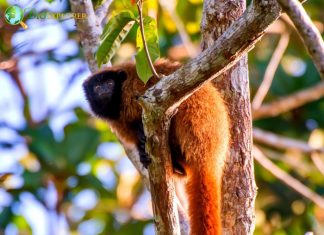
Atlantic Titi
The Atlantic titi, also known as the masked titi, inhabits the rainforests of the Atlantic coast of Brazil east of the Andes in the states of Bahia, Espírito Santo, northwest of Minas Gerais, north of Rio de Janeiro, and São Paulo. This species, found nowhere else in the world, inhabit the tropical forests of Brazil's Atlantic coast east of the Andes.
Read more
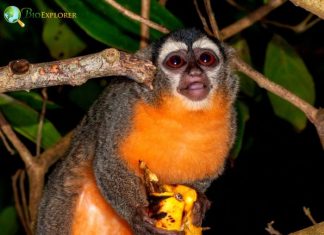
Azara’s Night Monkey
Azara's night monkeys, also known as southern night monkeys and Azara's owl monkeys, are native to the Gran Chaco region of South America, a vast area with many different ecosystems, from savannas to grasslands to dry spiny forests and gallery forests. Genetic testing has shown that the males of this species mated pairs are the fathers of the babies they care for.
Read more
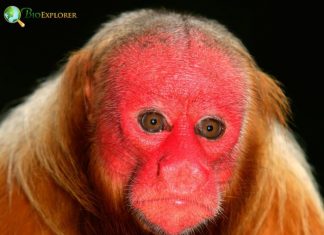
Bald Uakari
The obscure Bald Uakari (Cacajao Calvus) is an acrobatic Amazonian monkey with a flaming red face uniquely adapted to periodically flooded forests. Surprising insights on its taxonomy, specialized seed-based diet, unusual social life, habitat flexibility, and urgent need to conserve diminishing flooded forest habitat across the Amazon Basin.
Read more
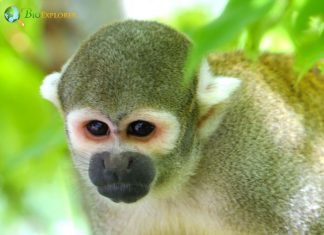
Bare-eared Squirrel Monkey
The bare-eared squirrel monkey also called the golden-backed squirrel monkey, is a subspecies of the Saimiri sciureus group native to the tropical forests and jungles of South and Central America. The bare-eared squirrel monkey differs from other species because it does not have ear tufts.
Read more

Bearded Saki
The bearded sakis or cuxiús are five species of New World monkeys classified in the genus Chiropotes. Bearded saki shows slight sexual dimorphism: males are usually taller and have longer, more prominent beards than females.
Read more
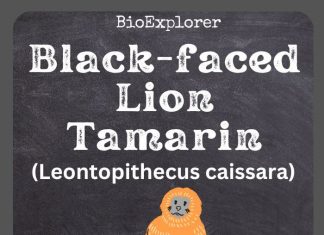
Black-faced Lion Tamarin
The black-faced lion tamarin, also known as superagüi lion tamarin, is a small New-World primate in the Callitrichidae family. Black-faced lion tamarins are diurnal and seek refuge in hollows or tree holes at night.
Read more
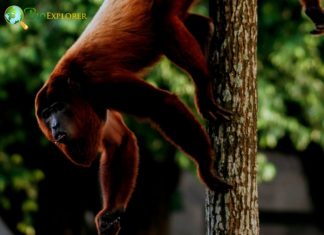
Bolivian Red Howler
The Bolivian red howler monkey is a New-World monkey species native to neotropical South America. The Bolivian red howlers live in groups of 1 to 3 males and 2 to 7 females. Males in bachelor groups try to dominate the female group by wrestling the lead male.
Read more
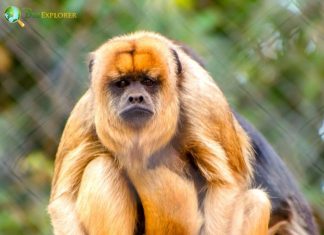
Brown Howler Monkey
The brown howler monkey, also called the brown howler monkey, is a species of New World monkey that lives in the forests of southeastern Brazil and northeastern Argentina. Despite the common name "brown howler", its color is remarkably variable, with some individuals mainly appearing black or reddish-orange.
Read more
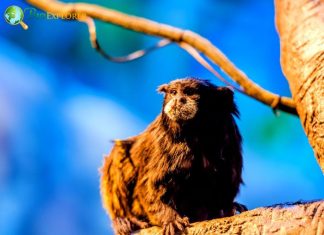
Brown-mantled Tamarin
The brown-mantled tamarin also called the Spix's saddleback tamarin, is a species of saddleback tamarin native to South America. The species are considered "phyletic dwarfs," meaning their small size is linked to their evolutionary development.
Read more
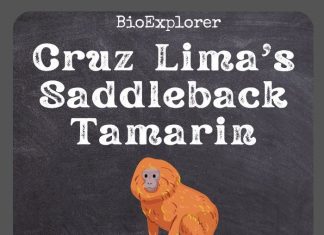
Cruz Lima’s Saddleback Tamarin
The Cruz Lima saddleback tamarin is a species of saddleback tamarin, a small monkey native to South America. The Cruz Lima saddleback tamarins were formerly thought to be a subspecies of the brown-mantled tamarin (Leontocebus fuscicollis).
Read more
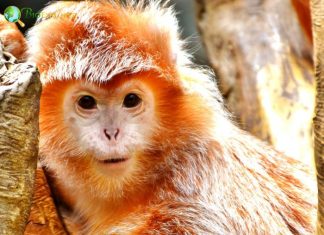
East Javan Langur
The East Javan langur, also called the Javan lutung, Javan langur, or ebony langur is an Old-World primate in the subfamily Colobinae. As with all langurs, the East Javan langur is a social animal, living in groups of about 7 individuals, with 1 or 2 adult males in the group.
Read more
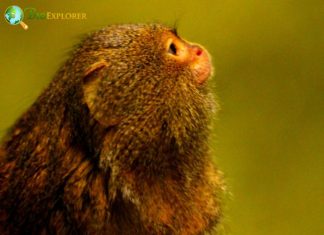
Eastern Pygmy Marmoset
The eastern pygmy marmoset is a species of marmoset, a tiny New World monkey found in the southwestern Amazon rainforest. Notably, at just over 100 grams (3.5 ounces), the eastern pygmy marmoset is the smallest monkey and among the smallest primates in the world.
Read more
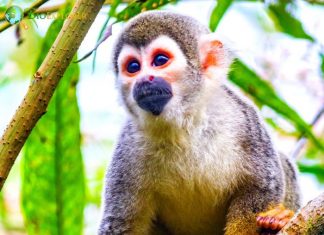
Ecuadorian Squirrel Monkey
The Ecuadorian squirrel monkey is a species of the squirrel monkey. Although it occasionally ventures to the ground to play or feed, the Ecuadorian squirrel monkey is strictly an arboreal primate.
Read more
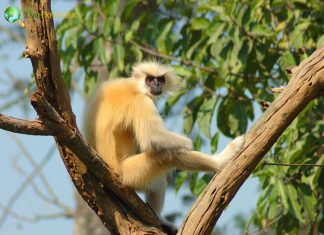
Gee’s Golden Langur
Gee's golden langur, also known simply as the golden langur, is an Old-World primate found in a small area of western Assam, India, and in the nearby foothills of the Black Mountains of Bhutan. Gee's golden langur was officially discovered in 1953 by Edward Pritchard Gee, an amateur naturalist and tea planter in Assam, India.
Read more
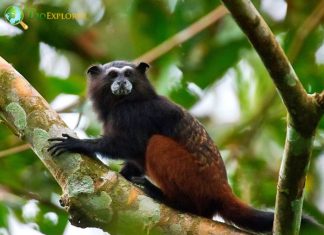
Geoffroy’s Saddleback Tamarin
Geoffroy's Saddleback Tamarin is a saddled tamarin, a species of small monkey native to South America. Geoffroy's saddleback tamarins often associate and form mixed groups with mustached tamarins (Saguinus mystax). Both species often perch in the same tree, responding to each other's alarm calls.
Read more

Gold-And-White Marmoset
The gold-and-white marmoset, also called the golden-white tassel-ear marmoset, is a species of marmoset, a tiny monkey native to the Amazon rainforest in the eastern Amazonas state of Brazil.
Read more
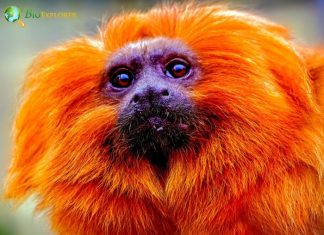
Golden Lion Tamarin
The golden lion tamarin (Leontopithecus rosalia), also called the golden tamarin, is a small New World primate in the Callitrichidae family. The golden lion tamarin derives its name from its vivid reddish-orange coat and extra-long hair around its face and ears, giving it a distinctive mane.
Read more
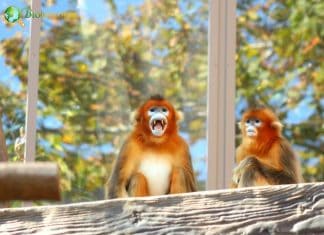
Golden Snub-Nosed Monkey
The golden snub-nosed monkey (Rhinopithecus roxellana) is an Old World monkey of the subfamily Colobinae. Golden snub-nosed monkeys are highly social animals that exhibit group behaviors known as fission and fusion.
Read more
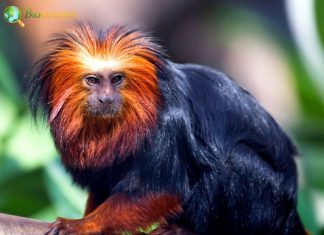
Golden-Headed Lion Tamarin
The golden-headed lion tamarin (Leontopithecus chrysomelas), also known as the golden-headed tamarin, is a lion tamarin native to Brazil. It is only found in fragments of lowland and premontane forests in the state of Bahia and is therefore considered an endangered species.
Read more
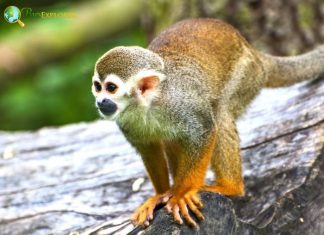
Guianan Squirrel Monkey
The Guianan squirrel monkey, also called the South American squirrel monkey, is a squirrel monkey found in Guiana, Brazil, and Venezuela. Saimiri sciureus was once thought to belong to the Collins' squirrel monkey and the Humboldt's squirrel monkey. Still, genetic research in 2009 and 2015 showed they were different species.
Read more
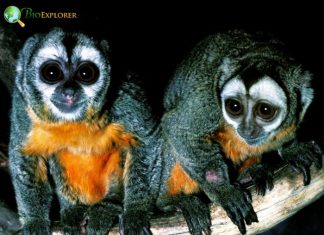
Humboldt’s Night Monkey
The three-striped night monkey (Aotus trivirgatus), also known as the northern owl monkey, Humboldt's Night Monkey, or northern night monkey, is one of several currently recognized species of owl monkeys.
Read more
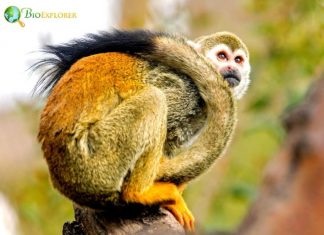
Humboldt’s Squirrel Monkey
Humboldt's squirrel monkey (Saimiri cassiquiarensis) is a species of squirrel monkey found in South America's tropical rainforests, except for the coastal forests of southeastern Brazil.
Read more

Lang’s Red Colobus
Lang's red colobus (Piliocolobus langi) is another species of red colobus monkey. Historically, it was treated as a subspecies of the Central African red colobus (Piliocolobus foai). Still, more recent taxonomies generally treat it as a distinct species.
Read more
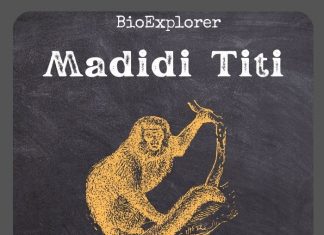
Madidi Titi
The Madidi titi also called the Golden Palace monkey, is a titi, a New World species of monkey discovered in 2004 in Madidi National Park in western Bolivia. The species got its name, Golden Palace, from an online casino after an auction.
Read more
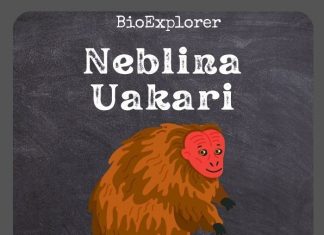
Neblina Uakari
The Neblina uakari (Cacajao hosomi), black-headed uakari, is a recently described monkey species from the extreme northwest of the Brazilian Amazon and adjacent southern Venezuela. Neblina uakari's English name refers to the Pico da Neblina, which marks its known distribution approximate center.
Read more

Niger Delta Red Colobus
The Niger Delta red colobus (Piliocolobus epieni) is a critically endangered colobus native to the western part of the Niger Delta in southern Nigeria. The scientific name of the Niger Delta red colobus, Piliocolobus epieni, comes from the local Ijaw language word for the species, "epieni".
Read more

Ollala Brothers’ Titi
The Ollala Brothers' titi (Plecturocebus olallae) is a marmoset species of New World monkeys native to Bolivia. Like all Neotropical primates (except Aotus), the Ollala brothers' titi monkeys are highly diurnal.
Read more

Pennant’s Red Colobus
Pennant's Colobus or Pennant's Red Colobus (Piliocolobus pennantii) is a species of arboreal primate in the Cercopithecidae family. Like other red colobus monkeys, the Pennant's red colobus lives in flocks that may consist of 12 to 80 individuals occupying a territory of 25 to 150 hectares.
Read more
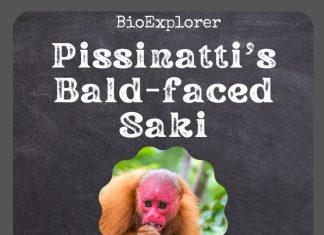
Pissinatti’s Bald-faced Saki
Pissinatti's Sakior or Pissinatti's bald-faced saki (Pithecia pissinattii), is a controversial species of saki monkey, a New World monkey. This species is named after Alcides Pissinatti, a Brazilian veterinarian who pioneered the breeding of endangered Brazilian primates.
Read more
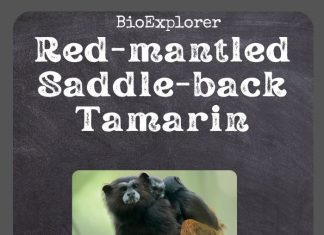
Red-mantled Saddle-Back Tamarin
The Red-mantled saddleback tamarin (Leontocebus lagonotus) is a species of saddleback tamarin, a species of small South American monkey. The Red-mantled saddle-back tamarin lives in Peru and Ecuador, and its type locality is in Peru, near the confluence of the Amazon and Napo.
Read more

Rio Beni Titi
The Rio Beni tití is a New World monkey species belonging to the genus Callicebus of the family Pitheciidae. It is native to Bolivia and is found mainly in the eastern parts of Bolivia in the upper basins of the Mamoré and Grande rivers.
Read more

Rio Mayo Titi
The Río Mayo titi (Plecturocebus oenanthe), also known as the San Martín titi, is native to the San Martín region of Peru and is considered Peru's most endangered primate. Río Mayo titis have been described as somewhat temperamental and hesitant and don't tend to be inquisitive.
Read more
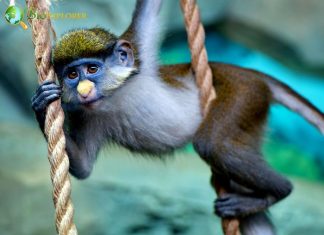
Schmidt’s Red-tailed Monkey
The Schmidt's red-tailed monkey, also called the red-tailed guenon, Schmidt's guenon, or black-cheeked white-nosed monkey is a primate species in the Cercopithecidae family. The Schmidt's red-tailed monkey is named for its red coloration on the underside of its tail, as well as the bicolor coloration of its tail as the reddish color increases from the base to the tip.
Read more
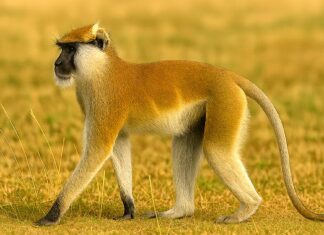
Southern Patas Monkey
The Southern Patas Monkey (Erythrocebus baumstarki), native to Tanzania, is a critically endangered primate known for its speed, elusive nature, and striking coloration. Once widespread, its population now teeters between 100–200 individuals due to habitat loss and human threats. Inhabiting open acacia woodlands, these ground-dwelling monkeys play a vital ecological role in seed dispersal and insect control. Conservation efforts are urgently needed to protect this rare species and restore its shrinking habitat range.
Read more
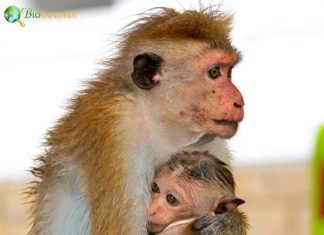
Toque Macaque
The toque macaque (Macaca sinica) is a red-brown Old World monkey endemic to Sri Lanka, known as the rilewa or rilawa. Its common name refers to the strand of hair on its head that resembles a brimless hat.
Read more
Recommended Readings:
Black Monkeys | White Monkeys | Green Monkeys | Red Monkeys | Brown Monkeys | Gray Monkeys | Yellow Monkeys
Black Monkeys | White Monkeys | Green Monkeys | Red Monkeys | Brown Monkeys | Gray Monkeys | Yellow Monkeys
